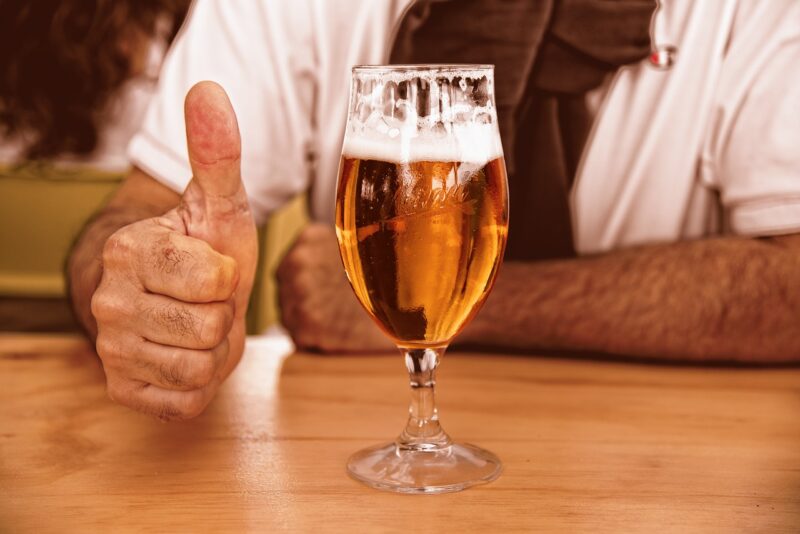
Beer is more than just a refreshing beverage; it’s a versatile ingredient that can elevate the dining experience when paired correctly with food. Whether you’re hosting a casual get-together or planning a gourmet meal, understanding the principles of beer and food pairing can make a significant difference in flavor enhancement and enjoyment.
In this ultimate guide, we’ll explore the art of pairing beer with various foods, providing you with insights, tips, and examples that will impress your guests and satisfy your palate.
1. The Basics of Beer Flavor Profiles
Before we dive into specific pairings, it’s crucial to understand the various flavor profiles of beer. Beer can range from light and crisp to rich and robust. Here are the primary categories:
- Lagers: Generally light, crisp, and refreshing. They are perfect with lighter entrees like salads, seafood, or chicken.
- Pale Ales: Often hoppy with a balanced flavor. They pair well with burgers, spicy dishes, or roasted vegetables.
- IPAs (India Pale Ales): Known for their bitterness and hoppy aroma. Pair them with bold flavors such as curry or barbecue meats.
- Stouts & Porters: Dark, rich beers that can enhance meats and rich desserts. Great with grilled meats, chocolate desserts, or even coffee-flavored dishes.
- Wheat Beers: Light, fruity, and spicy. They complement salads, seafood, and light cheeses.
Understanding these profiles allows you to start making educated decisions about what beer will enhance your meal best.
2. The Five Principles of Beer Pairing
When it comes to pairing beer with food, there are several guiding principles to help make the right choices.
- Complementary Flavors: Pair foods with beers that have similar profiles. For example, a citrusy IPA goes well with grilled shrimp marinated in lemon.
- Contrasting Flavors: Use contrasting flavors to balance each other. A sweet brown ale can cut through the richness of a fatty dish like duck confit.
- Intensity Matching: Match the intensity of the beer and the food. Heavier dishes like a beef stew fit well with darker beers, while lighter foods complement lighter beers.
- Regional Pairings: Consider pairing regional beers with local dishes. A Belgian beer can complement a dish made with Belgian ingredients beautifully.
- Experimentation: Don’t be afraid to experiment. Personal taste varies, and new pairings can surprise you with delightful results.
By keeping these principles in mind, you can elevate your dining experience significantly.
3. Beer Pairing Suggestions
Now, let’s explore some classic pairing suggestions that will cater to various palates:
Appetizers
– Lagers: Ideal for light appetizers; think shrimp cocktails or cheese platters.
– Wheat Beers: Perfect with spicy chicken wings or Asian spring rolls.
Main Courses
– Pale Ales: Excellent with burgers and fried foods for a crispy match.
– IPAs: Perfect for spicy foods like buffalo chicken or Indian cuisine.
– Stouts: Great with hearty meats such as steak or braised lamb shanks.
Desserts
– Porters: Pair beautifully with rich chocolate desserts or coffee-flavored dishes.
– Fruit Beers: Delicious with fruity desserts like cheesecake or tarts.
Each of these pairings can enhance the overall experience of your meal, allowing you to explore a diverse range of flavors.
4. Craft Beer vs. Commercial Beer
When considering beer pairings, it is crucial to address the difference between craft beer and commercial beer. The primary distinction lies in the flavor complexity and ingredients used.
– Craft Beer: Typically made in smaller batches, craft beers often have unique flavors, aromas, and styles—ideal for fine dining experiences.
– Commercial Beer: Generally lighter and more consistent in flavor, making them suitable for casual gatherings and everyday meals.
Understanding these differences is essential for selecting the right beer for your dining occasions. In higher-end settings, craft beers can significantly elevate the food experience, while commercial beers can provide excellent refreshing options for simpler or more casual events.
5. Tips for Hosting a Beer Pairing Dinner
If you’re planning to host a beer pairing dinner, here are some helpful tips:
- Menu Planning: Design your menu around the beer you plan to serve, thinking in terms of courses.
- Beer Selection: Offer a variety of beers ranging from light to dark, giving guests a chance to sample different styles.
- Glassware Matters: Use appropriate glassware for each beer type to enhance aroma and presentation.
- Tasting Notes: Provide guests with tasting notes that include flavor profiles, ABV, and pairing suggestions for each beer.
- Encourage Exploration: Allow guests to experiment with different pairings and encourage discussions about flavors and preferences.
Following these tips can create a memorable experience for your guests, enhancing their appreciation for both food and beer.
6. Conclusion
Pairing beer with food is a delightful journey that enhances flavors and creates memorable dining experiences. By understanding beer profiles, employing effective pairing principles, and being open to new combinations, anyone can become a master of beer pairing. Don’t hesitate to explore craft beers, experiment in your own kitchen, and host your own pairing dinners.
With time, experimentation, and a little patience, you will undoubtedly find the perfect beer to complement any meal, bringing joy and satisfaction to your palate and your dining companions.







